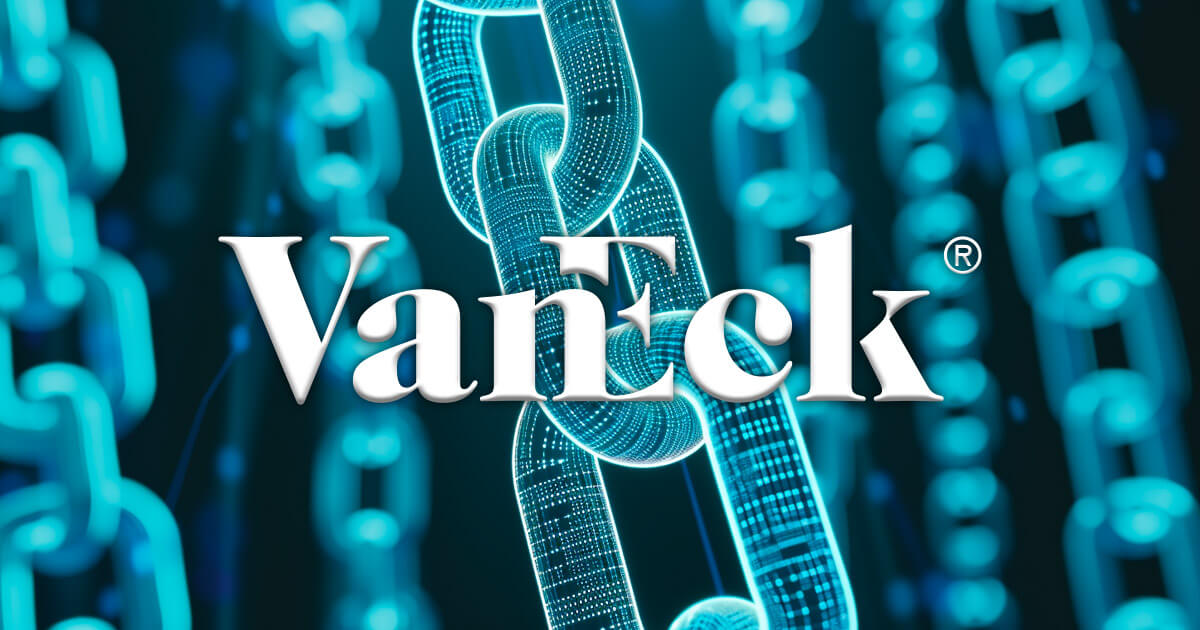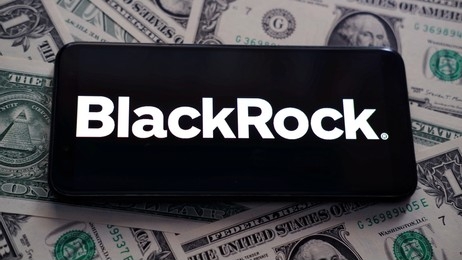Latest News
BIS urges central banks to adopt AI to mitigate economic and financial risks | MATIC News

The Bank for International Settlements (BIS) has called on central banks to embrace artificial intelligence (AI) in anticipation of its significant impact on the economy and financial system.
In a pre-released chapter of its upcoming Annual Economic Report for 2024, the BIS emphasized that the widespread adoption of AI could affect inflation trends and urged policymakers to incorporate AI into their operations to enhance financial and price stability.
The BIS Innovation Hub’s head, Cecilia Skingsley, said the regulator is actively testing AI’s capabilities in various areas in collaboration with central bank partners. She added:
“Central banks were early adopters of machine learning and are well positioned to make the most of AI’s ability to impose structure on vast troves of unstructured data.”
Examples include Project Aurora, which explores how to detect money laundering from payment data, and Project Raven, which uses AI to enhance cyber resilience.
The full BIS Annual Economic Report 2024 and the BIS Annual Report 2023/24 will be published on June 30.
Central banking and AI
The BIS’s Annual Economic Report 2024 outlines the implications of new AI applications for central banks, highlighting both potential benefits and risks.
AI’s benefits include improvements in lending and payments, while its risks involve the emergence of sophisticated cyberattacks. The report emphasizes the increased importance of data as a key element of the AI revolution and calls for greater cooperation among central banks.
BIS head of research and economic advisor Hyun Song Shin said:
“AI models have a direct bearing on how central banks do their jobs. Vast amounts of data could provide faster and richer information to detect patterns and latent risks in the economy and financial system.”
According to the report, central banks can leverage AI to enhance nowcasting by using real-time data to predict inflation and other economic variables more accurately. However, it warned that final decisions must be made by humans.
AI can also help identify financial system vulnerabilities, enabling authorities to better manage risks. As data becomes increasingly valuable, it will be the cornerstone of central banks’ use of AI technology.
Economic Implications
The report also explores AI’s broader implications on labor markets, productivity, and economic growth. AI could enhance firms’ ability to adjust prices faster in response to macroeconomic changes, affecting inflation trends.
The BIS noted that the effects on demand and inflationary pressures would depend on how quickly displaced workers can find new jobs and whether households and firms correctly anticipate future gains from AI.
In the financial sector, AI is expected to improve efficiencies and lower costs in payments, lending, insurance, and asset management. However, the BIS cautioned that AI introduces new risks, such as novel types of cyberattacks, and may amplify existing ones like herding, runs, and fire sales.
Latest News
VanEck’s Matthew Sigel confirms Solana ETF is a bet on Trump victory | MATIC News

VanEck Head of Digital Assets Research Matthew Sigel confirmed speculation that the company’s Solana spot ETF proposal bets on Donald Trump winning the US presidency.
The deadline for VanEck’s application is set for March 2025, which would put it well beyond the aftermath of the US Presidential elections in November.
Sigel simply responded with a simple:
“Can confirm.”
The analysts said approval odds for each ETF are “near zero” if a Democrat victory leaves Joe Biden in office and “better … but not guaranteed” if Trump wins the election. Trump would likely appoint a new SEC chair to replace the agency’s current chair, Gary Gensler.
Surveillance sharing
Another issue seen as a hurdle to potential Solana ETF is the lack of a futures market on CME, which experts believe was a key factor in spot Bitcoin and Ethereum ETFs gaining the regulatory green light.
Grayscale notably argued in its case against the SEC that the surveillance sharing agreements in place for the CME Bitcoin futures were replicable for its proposed spot ETF and sufficient to detect and prevent fraudulent activities.
The firm claimed that the SEC failed to provide a reasonable explanation for treating spot Bitcoin ETFs differently from futures ETFs in terms of surveillance-sharing agreements.
The case essentially revolved around whether the SEC’s demand for a surveillance sharing agreement specifically for a spot Bitcoin ETF was justified and whether the SEC applied its standards consistently across different types of Bitcoin-related ETFs.
Since the SEC has now approved spot ETFs for Bitcoin and Ethereum, Sigel believes VanEck will not need to demonstrate a CME futures market around Solana to obtain its ETF. He previously stated:
“Surveillance sharing agreements with spot crypto exchanges can obviate need for CME futures.”
Bloomberg agrees SSA is enough
Bloomberg analysts agreed that an SSA “should be enough” but concluded VanEck’s approach will “only work if there’s new leadership at the SEC and/or a literal act of Congress.”
They noted that past ETF filings, particularly BlackRock’s June 2023 spot Bitcoin ETF application, included surveillance-sharing agreements (SSAs) with Coinbase, leading other firms to introduce similar clauses. However, the analysts added that the agreements ultimately proved unnecessary.
The analysts also said that the SEC’s ongoing securities lawsuits against multiple exchanges, including Coinbase and Kraken, also complicate SSAs between exchanges and ETF issuers.
Mentioned in this article
Latest News
Bahamas to provide CBDC access via commercial banks | MATIC News

The Bahamas will provide access to its central bank digital currency (CDBC) the “Sand Dollar” through commercial banks to increase adoption, Reuters reported on July 1, citing the country’s central bank governor.
Governor of the Central Bank of The Bahamas John Rolle said the country intends to establish the regulations within two years and has started signaling its intent to banks.
Rolle said:
“We foresee a process where all of the commercial banks will eventually be in that space and they will be required to provide their clients with access to the [CBDC].”
The Central Bank of the Bahamas reportedly sees the change as critical to raising CBDC and mobile payment adoption rates, even though banks will need to significantly modify their existing IT systems to comply with the upcoming obligations.
Rolle said uptake of the Sand Dollar is still limited years after its launch in 2020, requiring a shift from incentives to enforcement.
Adoption in question
Reuters described low adoption statistics amid the news. It reported that the CBDC accounts for under 1% of the country’s currency in circulation.
Reuters said wallet top-ups fell to $12 million in the eight months before August 2023 from $49.8 million in the same period in 2022, based on central bank data.
Rolle previously described “wide use, but very low average transaction value” in an interview with The New Times on June 19. He said 120,000 mobile wallets exist, equal to 20% of retail bank accounts, but mobile wallets make up less than 1% of retail payments.
Strong short-term data
A central bank press release from February described stronger short-term data. It recognized “modest seasonal growth in digital payments activities,” including the Sand Dollar, even though lower government transfer payments impacted overall year-to-date trends.
The bank said that the person-to-business (P2B) and business-to-business (B2B) transactions reached a combined $4.5 million, mainly involving the Sand Dollars, doubling from November 2022. It said personal wallet counts rose 20% year-to-date in December 2023. Sand Dollars in circulation rose 60.8% to $1.7 million.
Bahamas’ mandatory adoption policies could precede other strategies elsewhere. Reuters noted that the European Central Bank similarly intends to require retail and banks to accept and offer any future digital euro if it proceeds with one.
Latest News
Polkadot treasury holds $245M but faces revenue decline and two-year runway | MATIC News

The Polkadot Treasury holds assets equivalent to 38 million DOT, worth approximately $245 million. Head Ambassador Tommi Enenkel, popularly known as Alice and Bob, shared a new report providing the latest update on the network’s treasury.
This balance equates to about two years of the runway at its current spending rate. The report stated:
“At the current rate of spending, the Treasury has about two years of runway left, although the volatile nature of crypto-denominated treasuries makes it hard to predict with confidence.”
Polkadot’s first six months of spending
During the first six months of this year, Polkadot invested heavily in its ecosystem, spending 11 million DOT, valued at around $87 million, across various projects.
According to the report, the network invested about $37 million in Outreach activities such as advertisements, sponsorships, and events. The network signed sponsorship deals with race car driver Conor Daly and also pushed several marketing activities designed to bolster the network’s adoption by the broader global community.
Polkadot also spent $23 million developing its network features and upgrades, including SDK, Data Services and Indexing, Governance, and Subwallets.
Moreover, the network invested $15 million in liquidity incentives and $5.5 million in Talent and Education. Additionally, it spent $3.8 million to maintain the network and core ecosystem components, and another $2.1 million went towards Research.
Revenue decline
The report highlighted a decline in Polkadot’s revenue. During the first six months of the year, the network’s total earnings dropped to 171,696 DOT from 414,291 DOT, recorded in the second half of 2023.
Enenkel attributed this decline to the significant drop in network fees, which fell from 313,443 DOT last year to 39,444 DOT in the 2024 first half:
“We see that direct revenue from fees is still marginal. Polkadot made 300k DOT from fees in 2023-H2 from a short-lived inscriptions campaign. Fees under regular conditions are pretty stable with about 20k DOT per quarter. Other sources of revenue are typically transfers from accounts that return funds that they received and pay them back for various reasons.”
Disclaimer: CryptoSlate has received a grant from the Polkadot Foundation to produce content about the Polkadot ecosystem. While the Foundation supports our coverage, we maintain full editorial independence and control over the content we publish.
-

 Hot Projects4 months ago
Hot Projects4 months agoBitcoin Blasts Past $70,000 to Register New All-Time High | MATIC News
-

 Latest News4 months ago
Latest News4 months agoCourt upholds SEC’s unregistered securities claims against Gemini, Genesis’ Earn program | MATIC News
-

 Latest News2 months ago
Latest News2 months agoSix Coinbase customers claim the exchange is violating securities laws in new lawsuit | MATIC News
-
Hot Projects2 months ago
Bitcoin Will Be Set For New ATHs If It Breaks This Resistance: Analyst | MATIC News
-

 Hot Projects3 months ago
Hot Projects3 months agoBitcoin ETF Inflows Could Eclipse $1 Trillion, Predicts Bitwise CIO | MATIC News
-

 Hot Projects3 months ago
Hot Projects3 months agoOndo Finance Joins BlackRock Tokenized Fund As Inflows Surpass $160M | MATIC News
-

 Latest News4 months ago
Latest News4 months agoOver $1 billion wiped off HEX’s valuation following Richard Heart’s disparaging remarks | MATIC News
-

 Latest News2 months ago
Latest News2 months agoNew Hampshire representative proposes Bitcoin ETF investment to address state financial liabilities | MATIC News



